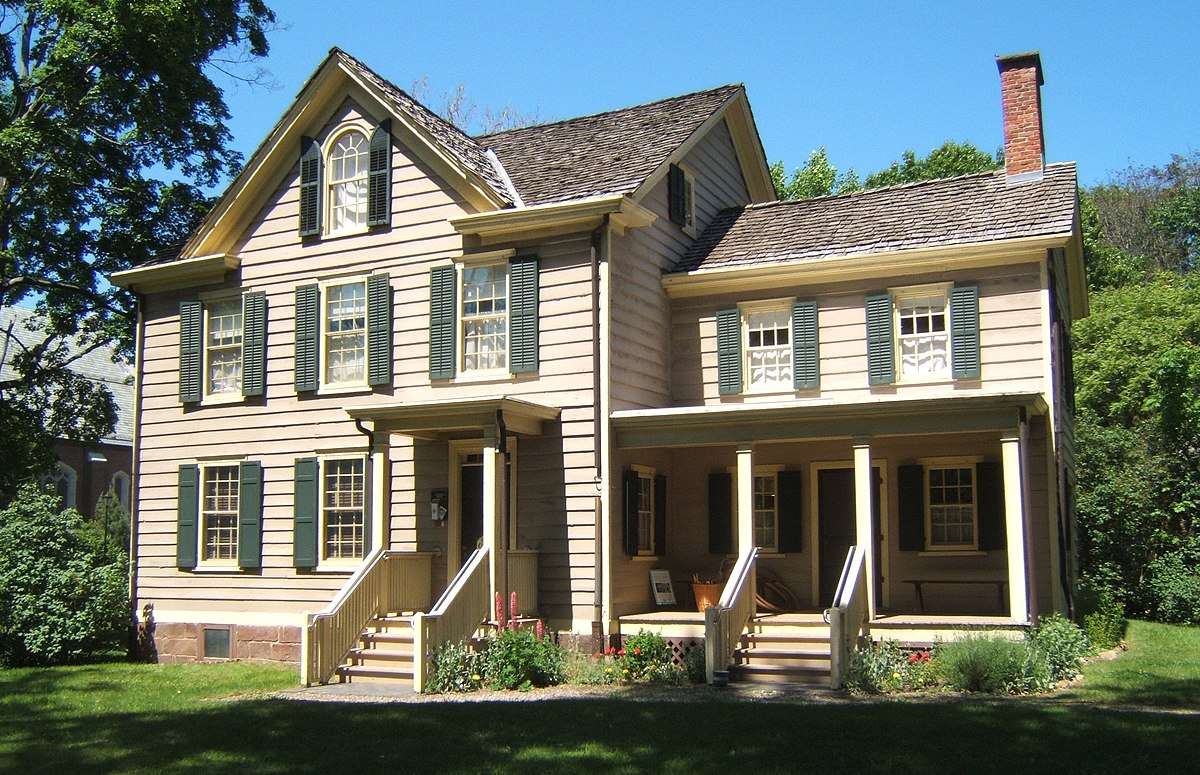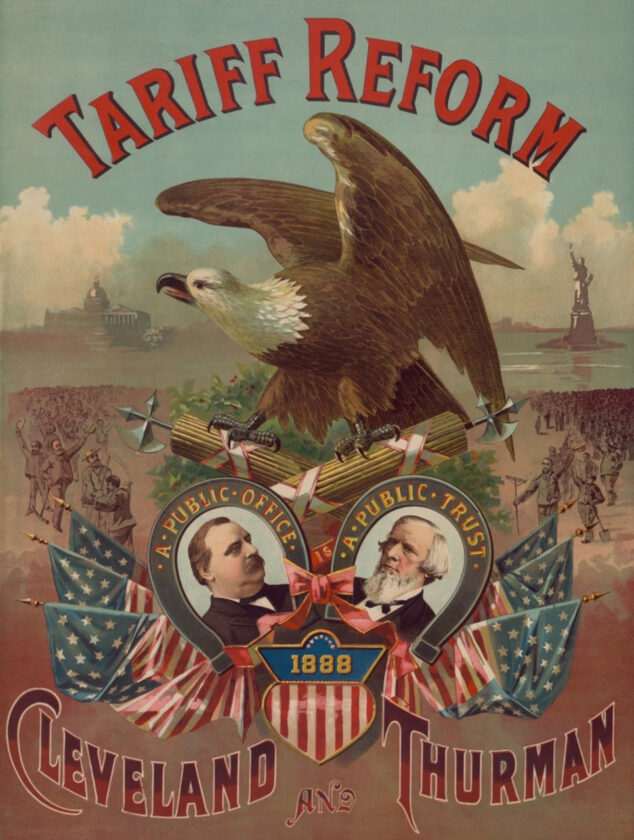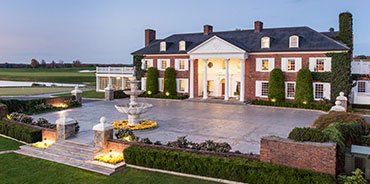
Presidents #22 and #24 and Now #45 and #47 – Only Two Presidents to Serve Non-Consecutive Terms.
Here’s how four presidential elections went down. Grover Cleveland, a Democrat, defeated Republican James G. Blaine of Maine and became the first president after the Civil War. The 21st President, Chester Arthur, did not seek reelection. Cleveland then lost his reelection bid to Benjamin Harrison. For the 24th presidential election, Cleveland won back the 24th Presidency over Harrison to serve his second non-consecutive term. He disliked the press and hated tariffs.
Now, we arrive in 2024 with another presidential story. Republican Donald Trump defeated Democrat Hillary Clinton after the 44th President Obama completed his second term. Trump then lost to former Democratic Vice President Joe Biden in 2020. Trump would rebound in 2024 to defeat Democratic Vice President Kamala Harris, who replaced #46 President Biden. Trump won to become the 47th President to serve his second non-consecutive term.
President #22 and #24: Steven Grover Cleveland (D)

You probably didn’t know much about Stephen Grover Cleveland, but you might now! After all, Cleveland was a Jersey guy! Grover Cleveland was born in Caldwell, New Jersey, in 1837, and Cleveland, Ohio, was named in his honor. He was one of nine children of Richard Falley Cleveland, a Presbyterian minister, and his mother, Ann Neal Cleveland. Cleveland married Frances Folsom in the White House in 1886. They had five children: Ruth, Esther, Marion, Richard Folsom, and Francis Grover.
Grover Cleveland was the 22nd and 24th President of the United States, making him a president who served two non-consecutive terms (1885–1889 and 1893–1897). Well, until now. A Democrat known for his honesty and fight against political corruption, Cleveland emphasized fiscal conservatism and limited government. During his first term, he vetoed numerous bills he deemed excessive and opposed subsidies to special interests. His second term was marked by economic challenges, including the Panic of 1893, which led to a severe depression and labor unrest. Cleveland’s commitment to principles often made him a controversial figure, as he prioritized what he saw as the public good over party loyalty.

Fast Forward to 2024 & Donald Trump (R)
President #45 and #47

Fast forward to a century later, compare Cleveland’s feat to now the second President to serve two non-consecutive terms; Donald Trump, the 45th and 47th President of the United States, served from 2017 to 2021 and will serve from 2025 to 2029. A Republican and former real estate developer and television personality, his presidency was characterized by a focus on economic growth through tax cuts and deregulation, a strong stance on immigration, and an “America First” foreign policy. Key achievements include significant tax reform, the appointment of three Supreme Court justices, and efforts to renegotiate international trade agreements. His 2024 campaign pledge emphasizes aggressive protectionism, including high import tariffs and policies to counter China’s economic influence. He also proposes eliminating taxes on Social Security and implementing another wave of tax cuts for all income classes. He also suggests a restructuring of Homeland Security’s position regarding border security and deporting illegal immigrants who have committed crimes.
Similarities
When they first ran for president, both Trump and Cleveland were seen as political outsiders. Cleveland had a reputation as a reformer, distancing himself from traditional party politics and focusing on fighting corruption. Similarly, Trump presented himself as an outsider to Washington, promising to “drain the swamp” and break away from the political establishment. Both presidents resonated with populist sentiments. Cleveland appealed to the common man through his fight against corruption and big business influence. At the same time, Trump used populist rhetoric to connect with middle- and working-class voters, especially those who felt left behind by globalization.


Trade and Economic Policy – Tariffs
It often occurs that Democratic and Republican presidents don’t agree on similar policies, but tariffs are key focal areas of both the Cleveland and Trump administrations. Both administrations experienced challenges related to globalization in the American economy. In his famous 1887 State of the Union Address, Cleveland called for tariff reform to reduce these duties and lower the cost of living for the American people. His stance made him a champion of free trade principles, advocating for a simpler, fairer tariff system that focused on revenue generation rather than protectionism.


Both presidents had strong views on economic issues. Cleveland opposed high tariffs, advocating for tariff reform to benefit the average American consumer. Trump’s view on tariffs was the opposite, as he used them to protect American manufacturing. Both presidents prioritized economic policies they believed would best serve American workers.


On the other side, President-elect Donald Trump’s position on tariffs in 2016 centered on using them to protect American manufacturing and reduce the U.S. trade deficit. He argued for imposing tariffs on countries he accused of unfair trade practices, particularly China and Mexico, to incentivize companies to bring manufacturing back to the United States. Trump emphasized that he would renegotiate trade deals like NAFTA to ensure they were more favorable to American workers. He also supported imposing significant tariffs on goods from countries he believed harmed American industry through currency manipulation or other unfair trade advantages.
New Jersey and the Two Presidents
After completing his second term as president, Cleveland retired to Princeton, New Jersey. He lived there from 1897 until he died in 1908. Cleveland is buried in Princeton Cemetery, owned and operated by the Nassau Presbyterian Church (formerly First Presbyterian Church) and near the town center. During this time at Princeton, he remained active in public affairs and became closely involved with Princeton University. He served as a trustee of the university and offered his views on various national issues, although he avoided running for public office again. In Princeton, Cleveland was respected as a local figure and engaged with the community. His home in Princeton, known as “Westland Mansion,” became a site of interest, and he was a notable resident who contributed to the cultural and social life of the area.


President Trump’s Trump National Golf Club in Bedminster, New Jersey, known as President Trump’s Summer White House, occupies 535 acres of beautiful countryside in central New Jersey. Just 45 minutes west of New York City, most of the property was once the estate of John DeLorean, the auto industry playboy whose stainless-steel car is remembered best in its role as the time machine in Back to the Future. When not staying at the White House, #47 will most likely spend his winters at Mar a Lago in West Palm Beach, Florida, and his summers at Trump National in Bedminster, New Jersey.
